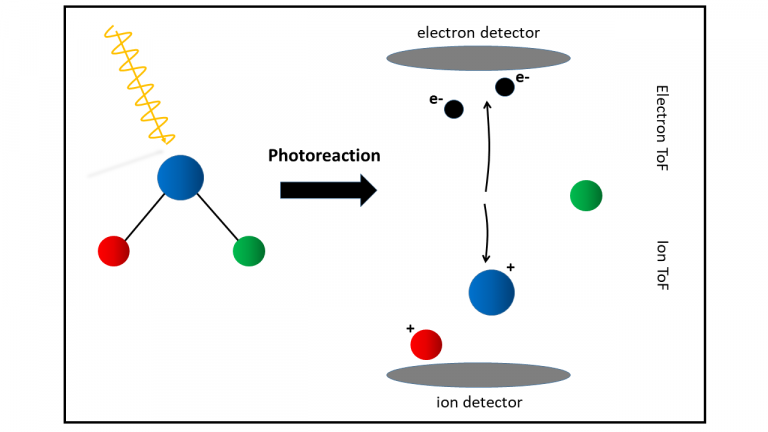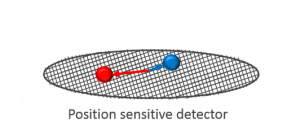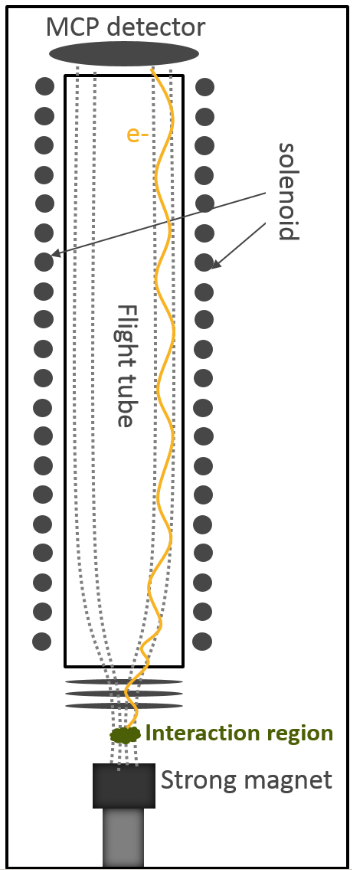Multi-coincidence spectroscopy involves the simultaneous measurement of two or more charged particles produced in a reaction, thereby affording researchers the possibility to perform comprehensive investigations on molecular and cluster ionization and reaction dynamics. Since its conception in the mid 1960’s, the coincidence technique has undergone considerable development and today a number of different spectrometers exist that enable the coincident measurement of both electrons and ions, only ions, or, only electrons.

Multi-coincidence experiments are relevant to a number of scientific fields:
- Atmospheric science
- Biologically important molecules, including those related to UV- induced biological reactions
- Fundamental research on atoms, molecules and clusters
- Industrially important molecules
- Photochemistry
The ICE end station is a mobile, modular, multi-coincidence and momentum imaging spectroscopy end station for Low Density Matter (LDM) research at the MAX IV beamlines. A new addition to the MAX IV LDM instrumentation repertoire, ICE was conceived in order to satisfy the need for an ‘in-house’ multi-coincidence setup that can be used at a number of different beamlines. The ICE endstation offers a versatile Reaction Microscope (REMI) instrument.
Reaction Microscope (REMI)

The reaction microscope is a multi-coincidence momentum spectrometer that allows the measurement of the vector momenta of both the electrons and ions produced in a reaction. A typical REMI is composed of two oppositely facing spectrometers, each of which uses either electric fields, or combined electric and magnetic fields in order to push the charged particles towards large area position sensitive detectors. The position sensitive detector is an indispensable component of the reaction microscope. From both the position at which the charged particle hits the detector and its measured time of flight, the ions initial momentum vector can be determined. A high performance detector system (with high spatial and temporal resolution) is essential in order to make high quality experimental measurements.
The REMI spectrometer (used with a sufficiently cold gas target) enables studies on:
- Molecular and cluster reaction dynamics
- Nuclear dynamics induced following photo- excitation/ionization
- Charge transfer processes
- Photoionization induced ultra-fast processes
- Site-selective ionization
Magnetic Bottle Electron Spectrometer (MBES)

The Magnetic Bottle Spectrometer is an electron time-of-flight spectrometer that can measure the kinetic energy distribution of electrons emitted following a reaction (for example, photo-ionisation). The flight tube of an MBES is usually at least 2m in length and the spectrometer employs additional magnetic fields in order to achieve high collection efficiency (nearly full 4π collection angle) and high detection efficiency. A strong permanent magnet (conical/hollow) imposes a strong inhomogeneous magnetic field across the interaction region with the result that electrons produced in that region are efficiently collected and directed into the flight tube. A weak and homogeneous magnetic field, generated by a solenoid coil wound around the length of the flight tube, guides the electrons to the end of the ToF and onto the detector. The detector of choice for a magnetic bottle spectrometer is an MCP assembly with high time resolution. From their time-of-flight, the kinetic energy of the electrons can be determined. In addition to boasting a high collection efficiency and excellent energy resolution, magnetic bottle spectrometers allow the coincident detection of more than one electron over a broad kinetic energy range.
The electron flight times in an MBES are typically on the order of microseconds. Thus, this instrument is not suitable for use with multi-bunch mode.
Magnetic bottle spectrometers are useful for the investigation of:
- Weak photoionization processes (due to the high detection efficiency of the spectrometer)
- Photoionisation experiments on low density samples
- Multi-electron emission processes
- Photoelectron-Auger electron coincidences (i.e. where the KE’s of the electrons are substantially different from each other)
- ICD processes
- Site-specific Auger spectroscopy